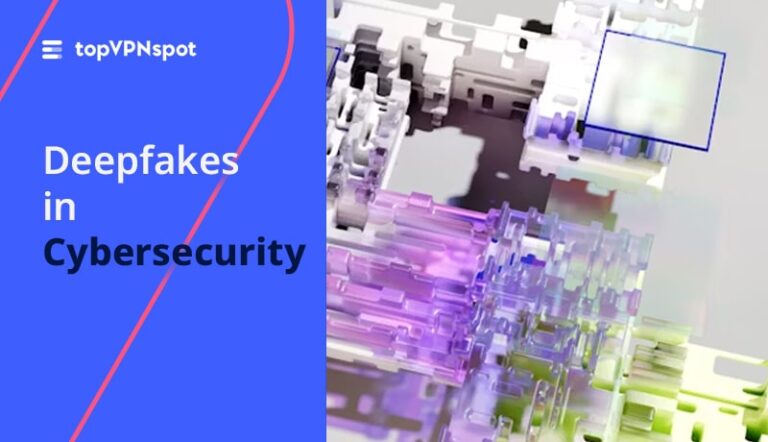In recent years, cybercriminals have leveraged artificial intelligence (AI) to infiltrate corporate systems and disrupt business operations. Now, with the advent of advanced generative AI tools like ChatGPT, business leaders face an even more complex set of challenges.
Realistic Scenarios of AI-Driven Cyber Threats
Consider these plausible scenarios:
- Sophisticated Spear-Phishing: A hacker uses ChatGPT to craft a personalized spear-phishing email based on your company’s marketing materials and previously successful phishing attempts. This sophisticated message deceives even well-trained employees because it does not resemble the phishing emails they are trained to spot.
- Deepfake Impersonation: An AI bot mimics the voice of a company executive to call an accounts payable employee. The bot requests a transfer of thousands of dollars to “pay an invoice,” and despite the employee’s training, the authenticity of the voice prompts compliance.
- Information Poisoning: Hackers use AI to corrupt data within a system, creating a fake yet valuable stock portfolio. They cash out before the deception is uncovered.
- Fake Executive Conversations: Generative AI produces convincing email exchanges between top executives discussing a cover-up of a financial shortfall. These fake emails are spread by social media bots, causing a plunge in stock prices and irreparable reputational damage.
The Evolution of Cyber Threats
Traditional cyber-attacks have primarily relied on high-volume, unsophisticated methods akin to a horde of zombies—numerous, persistent threats that occasionally find a weak spot. More sophisticated attacks, often reported in the media, resemble cat burglars or con artists, requiring meticulous planning and human involvement.
Now, with generative AI, these threats have evolved. Imagine each zombie now possesses the intelligence of a cat burglar, understanding security systems and finding ways to bypass them. Con artists, enhanced by AI, can interactively build trust with employees and deceive them more effectively.
Adapting to AI-Enhanced Cyber Threats
The era of AI-powered malware demands a shift from traditional security practices. Defense in depth—implementing security policies, tools, and awareness programs—will no longer suffice. Companies must adopt real-time adaptive strategies to counter next-level AI-generated threats, requiring both advanced technology and smarter employees.
Utilizing Generative AI for Defense
To enhance defensive capabilities and respond to threats in real time, companies should leverage generative AI. Here’s how:
- Enhancing Perimeter Defenses: Companies currently use malware databases to detect threats, but these are not tailored to individual company vulnerabilities. Hackers will use AI to create highly believable phishing emails. By integrating tools like GPTZero and ZeroGPT into mail servers, businesses can detect AI-generated text, improving the ability to block sophisticated phishing attempts.
- Improving Real-Time Detection: Traditional pattern detection methods rely on known attack patterns. AI can help detect anomalies in employee behavior, such as unusual system logins or data access, signaling potential hacking attempts or insider threats. This proactive approach helps identify and mitigate threats before significant damage occurs.
Training Employees for AI-Era Cybersecurity
Human behavior remains a critical factor in cybersecurity. Traditional training methods that focus on rules are insufficient in the AI era. Employees need to evolve from rule-followers to active defenders. This shift requires knowledge-based training that equips employees to recognize and respond to new threats dynamically.
- Adaptive Training: Move beyond compliance-based training. Implement instructor-led sessions that develop situational awareness and practical skills to handle real or potential cybersecurity threats.
- Scenario-Based Learning: Incorporate live discussions and practical scenarios in training programs. Help employees understand how to apply their knowledge in varied and evolving threat landscapes.
Proactive Defense Strategies
Beyond training, companies should adopt proactive strategies. Following Sun Tzu’s wisdom that “defense is the planning of an attack,” businesses should:
- Hypothesize Threat Vectors: Use AI-based models to predict potential attack methods. Form SWAT teams with top IT experts to brainstorm and simulate attacks, improving defenses and employee preparedness.
- Collaborative Cyber War-Gaming: Transition from traditional red team/blue team exercises to a collaborative “purple team” approach. This fosters a deeper understanding of emerging attack methods and effective defensive tactics.
Embracing AI for Smarter Defense
The most effective defense against AI-powered hacks will be AI-informed. This involves not just faster and more robust defense strategies but genuinely smarter approaches for both technology and personnel. Companies must augment traditional defenses with AI-powered tools and rethink their defense methods and training programs.
In the new world of AI-driven cyber threats, businesses must act now to ensure their security and resilience.
Struggling to select the ideal VPN? Consult our thorough, user-friendly comparison of leading VPN services to determine the perfect fit for your online security needs.
Why trust us
Behind every review is our team’s real-life, multi-device, cross-location VPN showdown. We’re all about the facts, not the hype. We’ve spent hours testing VPNs on every device we’ve got – to bring you advice that’s as genuine as it gets.
212
Hours of rigorous testing of each top VPN service
100%
Strict policy of unbiased testing & assessment
No Ads here
To help us keep it ad-free you can follow us on X
Reader Favorites
Privacy
April 2024
•
5 min read
Uncover the hidden dangers of online identity cloning and learn how to protect your digital self from cybercriminals
Danyal Sadique
VPNs
April 2024
•
5 min read
Discover why a VPN is essential for travelers and how it enhances security and accessibility abroad
Umar Zaman A.
Security
April 2024
•
5 min read
Prepare for the future of cybersecurity by understanding and defending against next-gen AI-driven threats
Raffeain K.
VPNs
May 2024
•
5 min read
Ensure secure remote work by using VPNs to protect sensitive data and communications. Learn key best practices for optimal safety
M. Zayan
Security
June 2024
•
5 min read
Unveil the risks posed by deepfakes in cybersecurity and discover ways to protect against this emerging threat
Danyal Sadique
Privacy
April 2024
•
5 min read
Explore how your data is driving AI development and what you can do to maintain control over your personal information
Umar Zaman A.
We are an alliance of passionate cybersecurity experts, united by a shared mission to disseminate our in-depth knowledge of digital security measures. Our commitment is to empower internet users by providing them with the essential tools and insights needed to navigate the online world safely. Through topVPNspot.com, we offer a platform where our collective experience in cybersecurity converges to guide users in protecting their digital presence effectively.





